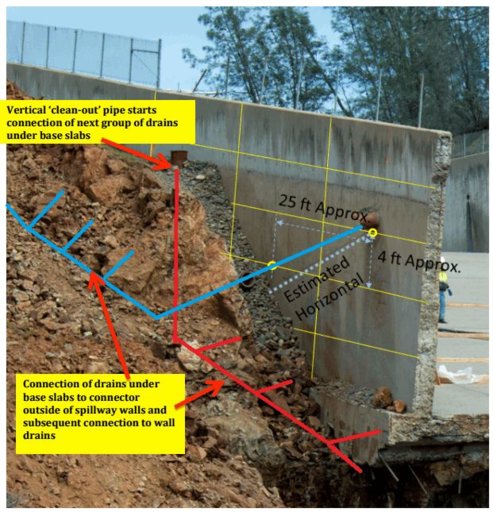yea but if they had said to y'all prior to the hole issues.. "This spillway has serious issues, we need a major and complete repair to update it to current standards and prevent long term future failure" you'd be facing almost the same pricetag (minus debris work. plus excavation that the collapse provided free of charge) you are now.
At least this way the feds are helping you out more than if you took care of your infrastructure yourself in a timely fashion.
Your repair estimate assumes that the spillway would have needed to be replaced to the extent it is now scheduled to be, regardless of the recent incident... Croyle has used the analogy of a car in a few of the press conferences, and it seems fitting. Oroville Dam and its structures are like a car in that they require constant monitoring and maintenance. As a car (or dam) ages, many potential issues can be averted by watching for wear and tear and replacing parts before they completely break and cause larger problems... Of course some things are more difficult to monitor than others, but until (and if we ever) we learn the cause of the spillway failure, I am not so sure it was entirely unavoidable...
Top officials at the DWR are gubernatorially appointed, and there is a decade or so long history of contention between the DWR and local officials and citizenry, at least in Butte County. Some of these issues are apparent in the relicensing documents, and the dragging on for years now of the relicensing process. A long list of critical Enterprise Record editorials and articles. Prior accidents at the Oroville site. Instances when standard operating procedures were not followed...
The three most recent inspection reports also illustrate some of the problems locals have with the management of the dam structures.
2014: "The river valve system (RVOS) was recently rehabilitated and tested for discharges of up to 2500cfs...the system is now operated and monitored remotely" (pg 3 here:
https://www.documentcloud.org/documents/3458959-Oroville-Dam-Inspection-Report-June-2014.html )
2015: "As previously noted, the river valve syatem (RVOS) has been rehabilitated and tested for discharges up to 2500cfs...Nothing unusual of mechanical nature was observed in the outlet chamber. We could not access the deck beyond the pressure relief wall to observe the rehabilitated H-B valves. We did note that two new H-B valves had been stored in the powerhouse." (pg 3 here:
https://www.documentcloud.org/documents/3458958-Oroville-Dam-Inspection-Report-2015.html )
2016: "The new low level outlet baffle ring has been installed and tested using the original valves. The combined release was 4,000cfs. Testing delays were caused by electro-magnetic issues. Manufacturing defects have delayed the installation of replacement valves. The schedule to install new valves is uncertain." (pg. 3 here:
https://assets.documentcloud.org/documents/3458956/Oroville-Dam-Inspection-Report-August-2016.pdf)
All 3 reports also mention seepage at the dam and repeatedly state: "A plan for long-term monitoring of the phreatic surface within the dam embankment needs to be developed and implemented." (pg 1 in all reports). Here we are, 4 years after the first report...
What else has not been monitored and maintained? Could thorough monitoring have caught the issues that ultimately caused the spillway failure and allowed for timely repair or partial updates, instead of the current total replacement?

